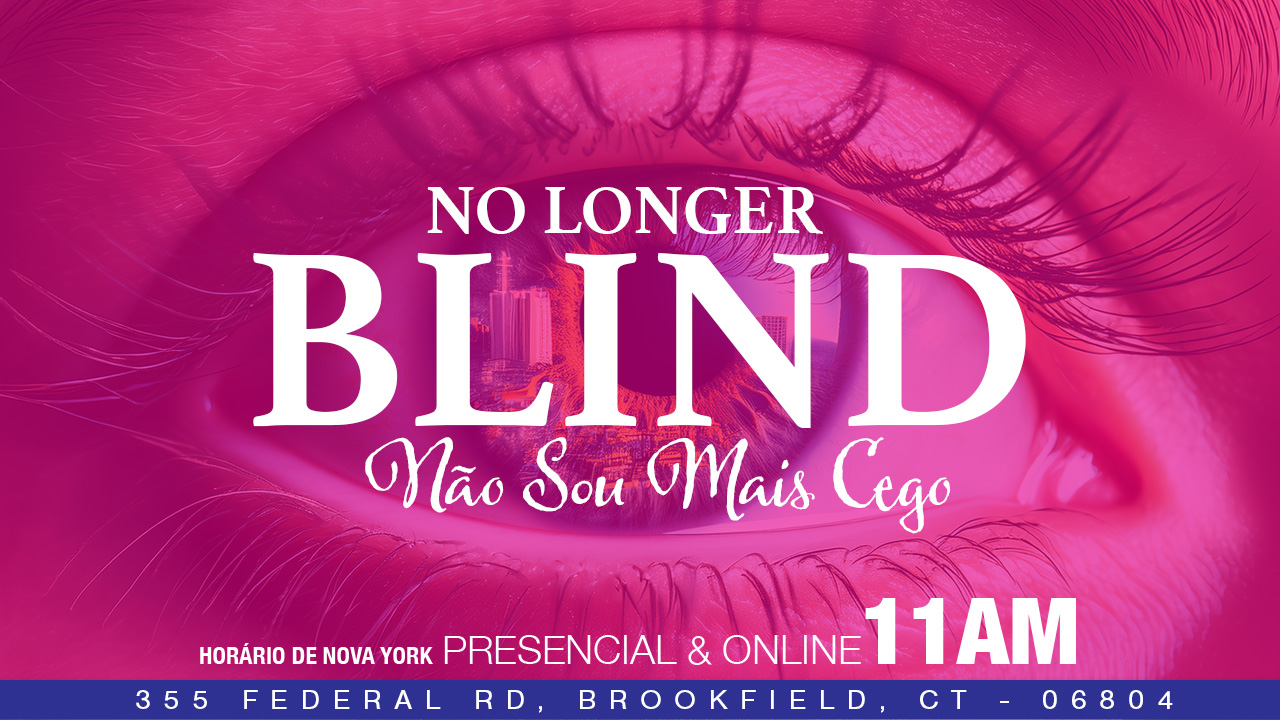
No Longer Blind – Part 3 | Não Sou Mais Cego – Parte 3
Parte 3 – Eu Era Cego, Mas Agora… / Part 3 – I Was Blind, But Now… Um homem nasce cego e é curado por Jesus — João 9:1–41. Interrogado pelos líderes religiosos, ele declara com ousadia: “Uma coisa sei: eu era cego, e agora vejo!” (v.25) Quando Jesus abre os olhos, Ele também fortalece a voz. O que você está fazendo com sua cura? Não se cale. Sua história pode abrir olhos de outros. A man born blind is healed by Jesus — John 9:1–41. Questioned by religious leaders, he boldly says: “One thing I do know. I was blind but now I see!” (v.25) When Jesus opens your eyes, He also strengthens your voice. What are you doing with your healing? Don’t stay silent. Your story could open others’ eyes.
-
No Longer Blind – Part 2 | Não Sou Mais Cego – Parte 2
Parte 2 – Tocou Duas Vezes / Part 2 – Touched Twice Jesus cura um cego em duas etapas — Marcos 8:22–26. Primeiro ele vê de forma distorcida: “Vejo pessoas, mas parecem árvores andando.” (v.24) Depois, sua visão é restaurada por completo. Jesus nos ensina que nem sempre a cura é instantânea — às vezes, Ele quer que aprendamos a confiar enquanto tudo ainda está embaçado. Está aceitando enxergar só pela metade? Peça um segundo toque. Jesus heals a blind man in two stages — Mark 8:22–26. At first, he says: “I see people; they look like trees walking around.” (v.24) Then, his sight is fully restored. Jesus shows us that healing isn’t always instant. Sometimes He teaches us to trust while things are still blurry. Are you settling for half-vision? Ask for a second touch.
-
No Longer Blind – Part 1 | Não Sou Mais Cego – Parte 1
Parte 1 – Você Crê Nisso? / Part 1 – Do You Believe This? Dois homens cegos seguem Jesus e clamam por misericórdia — Mateus 9:27–31. Quando finalmente chegam até Ele, Jesus faz uma pergunta que ainda ecoa hoje: “Vocês creem que posso fazer isso?” (v.28) A cura vem com fé — e com disposição de ir até o fim. Não pare no clamor. Siga Jesus até dentro da casa e diga: “Sim, Senhor!” Two blind men follow Jesus and cry out for mercy — Matthew 9:27–31. When they reach Him, Jesus asks a question that still echoes today: “Do you believe that I am able to do this?” (v.28) Healing begins with faith — and with the courage to come all the way in. Don’t stop at the cry. Follow Jesus into the house and say: “Yes, Lord!”
-
Living For What Lasts – Part 2 | Vivendo Pelo Que é Eterno – Parte 2
Parte 2: Quando for tarde demais | Part 2: When It’s Too Late Jesus narra a história de dois homens: um rico, que vivia no luxo, e Lázaro, um mendigo coberto de feridas à porta do rico — Lucas 16:19–31. Após a morte, os destinos se invertem: Lázaro é acolhido ao lado de Abraão, e o rico sofre em tormento. O ensinamento é claro e direto: há consequências eternas nas nossas escolhas presentes, especialmente na forma como tratamos os outros e respondemos à Palavra de Deus. O tempo de ouvir e mudar é agora. “Eles têm Moisés e os Profetas; que os ouçam.” (Lucas 16:29, NVI) Jesus tells the story of two men: a rich man who lived in luxury and Lazarus, a poor beggar covered in sores at his gate — Luke 16:19–31. After death, their fortunes are reversed. Lazarus is comforted, and the rich man is in agony. The message is sobering: our eternal future is shaped by how we live and love now, and by how we respond to the voice of Scripture. There will come a day when it’s too late to change. “They have Moses and the Prophets; let them listen to them.” (Luke 16:29,








